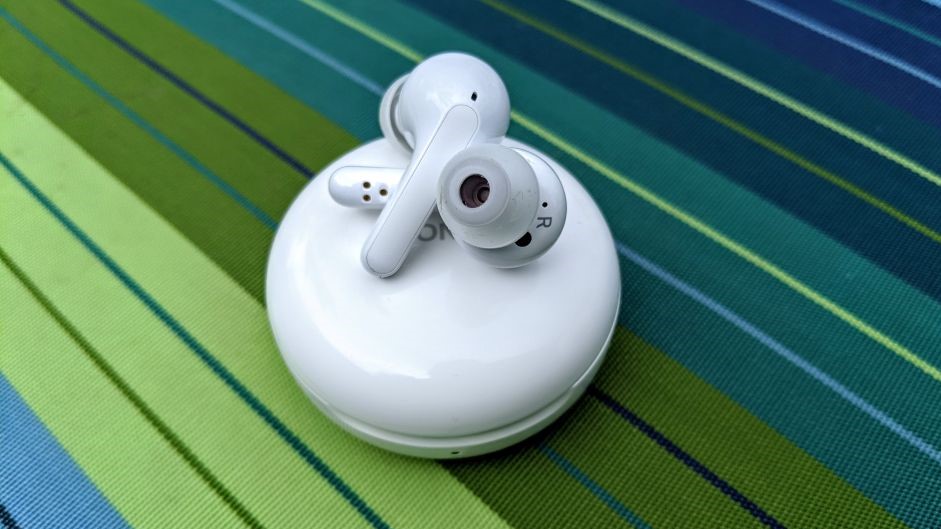Tom's Guide Verdict
Self-cleaning buds with bright sound, the LG Tone Free (HBS-FN6) is a distinctive creation with some blemishes.
Pros
- +
Surprisingly good sound
- +
Terrific ambient-listening mode
- +
Good amount of features
- +
Chic pebble-shaped charging case
- +
Great noise isolation
Cons
- -
Touch controls are finicky
- -
Look too similar to the AirPods
- -
UV cleaning isn’t visible to the eye
Why you can trust Tom's Guide
With the LG Tone Free (HBS-FN6) buds, LG looks to capitalize on the true wireless craze while introducing a first-of-its-kind product in the category. These in-ear monitors check off several must-haves, including great sound, comfort, and personalized settings to enhance the listening experience. Even better, they’re also designed to clean themselves, using UVnano cleaning technology to disinfect each bud when placed in the charging case.
Innovative and niche, LG set their focus on hitting certain performance marks, but drops the ball with others. Their attempt at copying the AirPods is uninspired, the touch controls have issues, and though the idea of self-cleaning buds has some allure to it, there’s no way of determining how effective the feature is.
- Check out the competition: Apple AirPods Pro review
- And read our Jabra Elite Active 75t review
- These are the best wireless earbuds you can buy now
So, if you’re looking for quality-sounding earbuds with singular features, at a lower price than category leaders like the AirPods Pro and Jabra Elite Active 75t, read our LG Tone Free review to see why these buds may be suited for you.
Colors: Gloss White and Matte Black
Battery life (rated): 6 hours (single charge), 18 hours (with charging case)
Size: 1.29 x 0.63 x 0.98 inches (per bud), 2.15 x 1.08. 2.15 inches (charging case)
Weight: 0.19 ounces (per bud), 1.39 ounces (charging case)
Connectivity: Bluetooth 5.0
LG Tone Free review: Price and availability
The LG Tone Free (HBS-FN6) is sold for $149.99 at major retailers, including Amazon, Best Buy (online only), and Verizon. Keep in mind the awkward naming convention, as there are several models listed under the Tone Free moniker, so make sure you have the proper model number when searching online. The HBS-FN6 version is available in two colors: Modern White and Stylish Black.
LG ships the Tone Free with a fair number of accessories: three sets of ear tips, a short USB-C cable, and a charging case. A user manual and warranty come part of the package.
LG Tone Free review: Design
LG makes no apologies for biting the AirPods design, from the all-plastic construction to the stem silhouette to the IPX4 rating (exclusive to the AirPods Pro). Don’t get me wrong, some people may love it (Apple fanboys, in particular), and it is eye-catching enough that gawkers might confuse them for AirPods at first glance. That doesn’t necessarily make them visually appealing, at least not in this reviewer’s eyes.
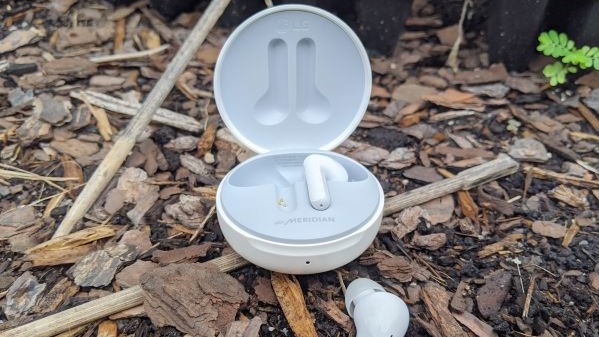
Regarding differences, which are very small, the Tone Free’s stems are longer and feature a thin and slim touch panel on the front. The AirPods Pro bears a more distinctive look with black mic vents, a more elongated sound port, and force sensor controls at the bottom of the stems. Again, these are small details that you won’t notice unless you’re holding the two products in hand.
Wrapped in solid plastic casing, these buds are built to take a beating, though you can expect their clean look to wear away with every tumble. Like AirPods, the material is vulnerable to scratches and scuffs. One advantage is that they come sweat- and water-resistant, so you won’t have to worry about the internals experiencing any moisture-associated damage.
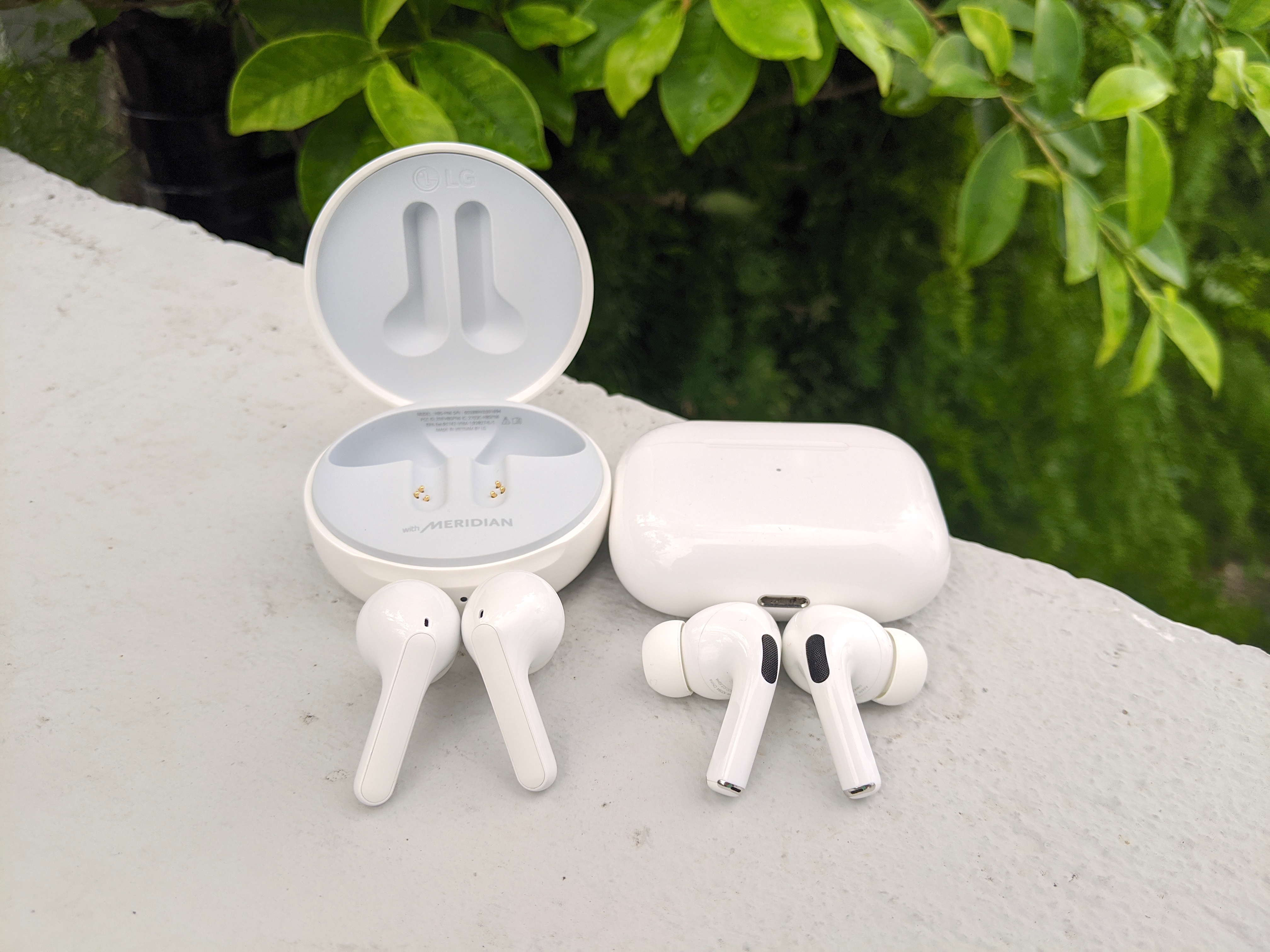
What the Tone Free lacks in design, it makes up for in presentation, as highlighted by the pebble-shaped charging case. It’s attractive and unique, exuding a makeup compact case vibe. I found it equally light to the AirPods Pro case, and more portable, taking up less space in denim pockets. The lid opens easily and has a magnet to shut it properly, though it’s not the strongest and will cause the buds to spill across the floor if dropped. It also accumulates scratches and dents as badly as any AirPods case.
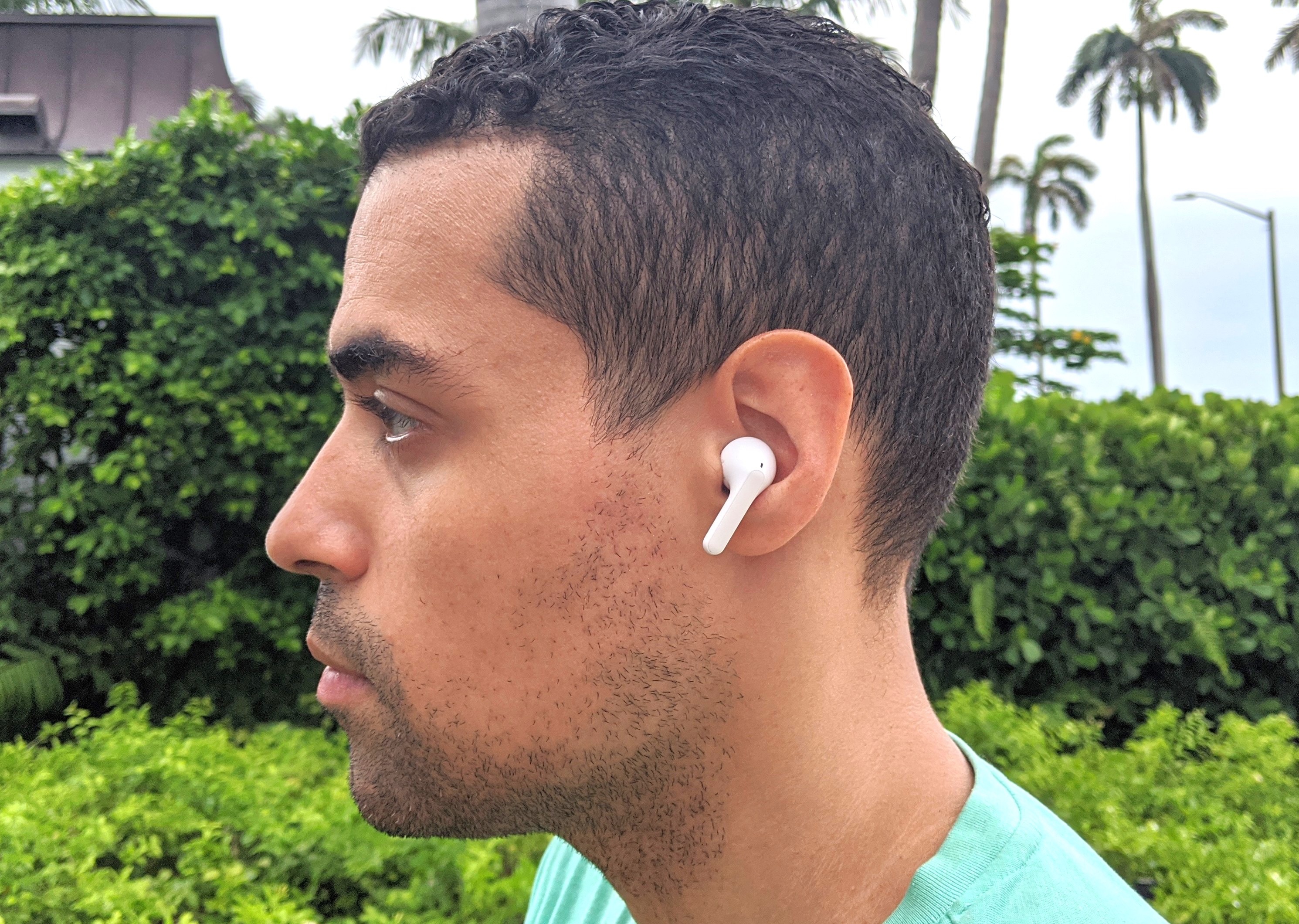
As far as comfort and fit, LG’s buds are as reliable as Apple’s Bluetooth danglers. The soft, medical-grade ear gels create a tight seal to keep them stabilized and block ambient sounds from entering your ears. Honestly, I prefer the AirPods Pro’s comfort due to the longer sound port; it applies little to no pressure on the concha. The Tone Free isn’t unpleasant by any means. I found the buds rested gently on my ears and allowed for lengthy listening throughout the day. Only after I wore them for 3 hours straight did I feel the slightest soreness; nothing to cry about.
LG Tone Free review: Controls
Touch controls on wireless earbuds are common nowadays, but only a few brands have gotten the feature down pat. LG isn’t one of them. I love the idea of long, slim touch panels because it affords more space to execute commands. The problem is LG’s panels are highly sensitive to taps, don’t register them accurately, and work best when using slide gestures, which is not a method that is advertised. What I can say is the latter is most effective for adjusting volume.
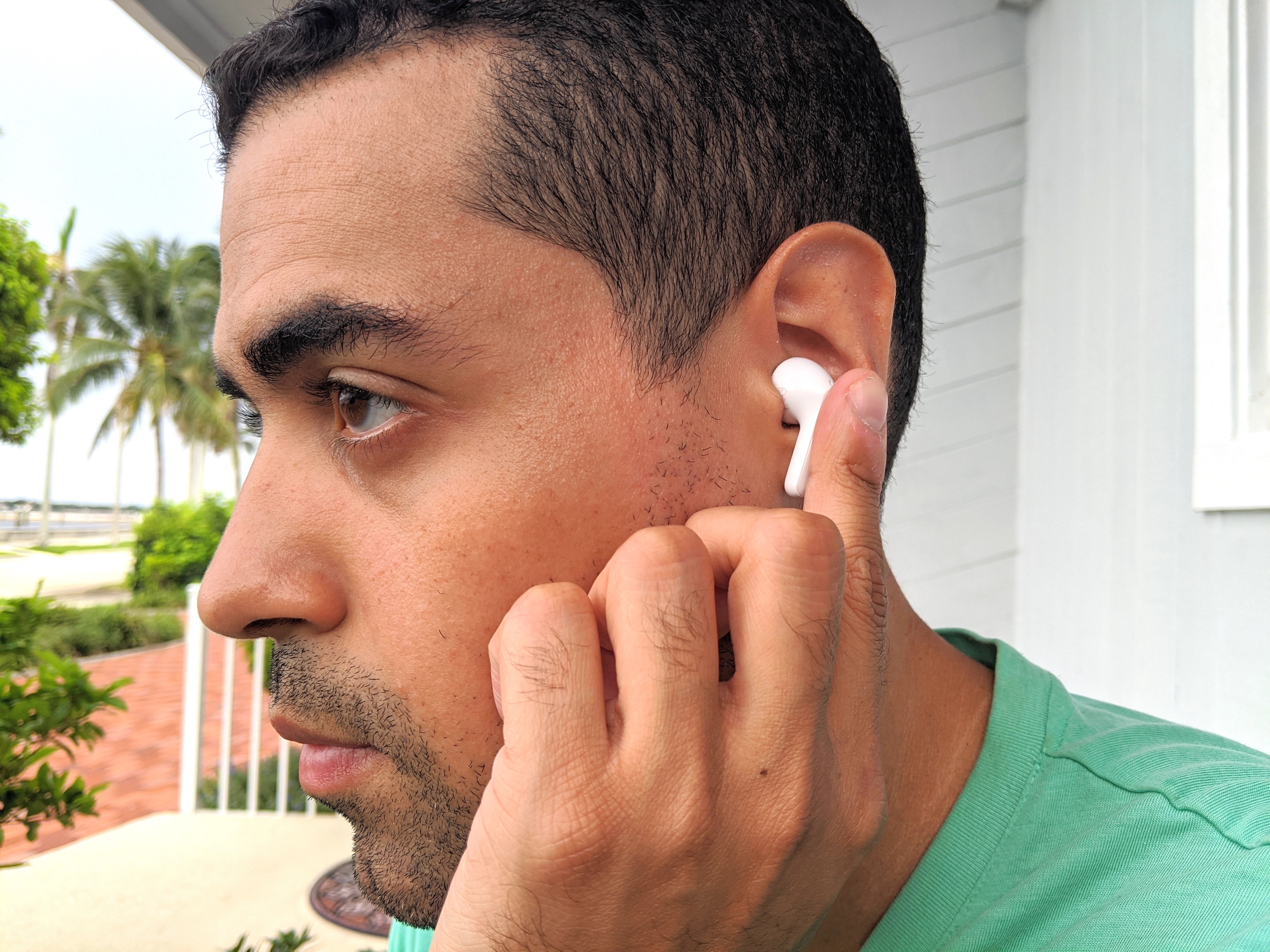
LG claims the Tone Free comes programmed with in-ear detection, but it’s poorly done. Every time I took off the buds, music paused, but only for about 1.5 seconds before resuming play.
To make the digital assistant available, you’ll have to go into the Touchpad settings in the companion app and select ‘Voice Command’ on either the left or right earbud, or both. When enabling the feature on my Android smartphone, I was met with responsive and speedy results. The results were practically the same on macOS with Siri pulling up Apple Music and calendar requests with ease.
LG Tone Free review: App and special features
LG developed a brand-new app that carries the same name as the buds, and offers a host of practical features, including a built-in EQ, toggle controls, and smart settings that adapt to the user’s needs.
The EQ is where you’re likely to invest most of your time, but be warned, it’s quite more technical than others we’ve tested. Instead of keeping things simple by categorizing the different frequencies (lows, mids, highs), this EQ has you adjusting what look like decibel levels, which, unless you’re an audio expert, requires a steeper learning curve. You can skip the entire process of creating your own music profile by selecting from the four available presets: Immersive, Natural, Bass Boost, and Treble Boost.
The Tone Free’s unsung feature might be its ambient listening mode. LG’s dual-mic system picks up noises across the frequency spectrum with precision, producing amplified results that make it easy to identify sounds. I could hear my fiancée whistling in a packed car that was bombarded with different noises, from the AC to the loud stereo to her siblings in the backseat shouting over each other. In fact, I could hear the AC humming loudly while vibing out to music on the way to the beach. You can also adjust the feature via a slider in the app.
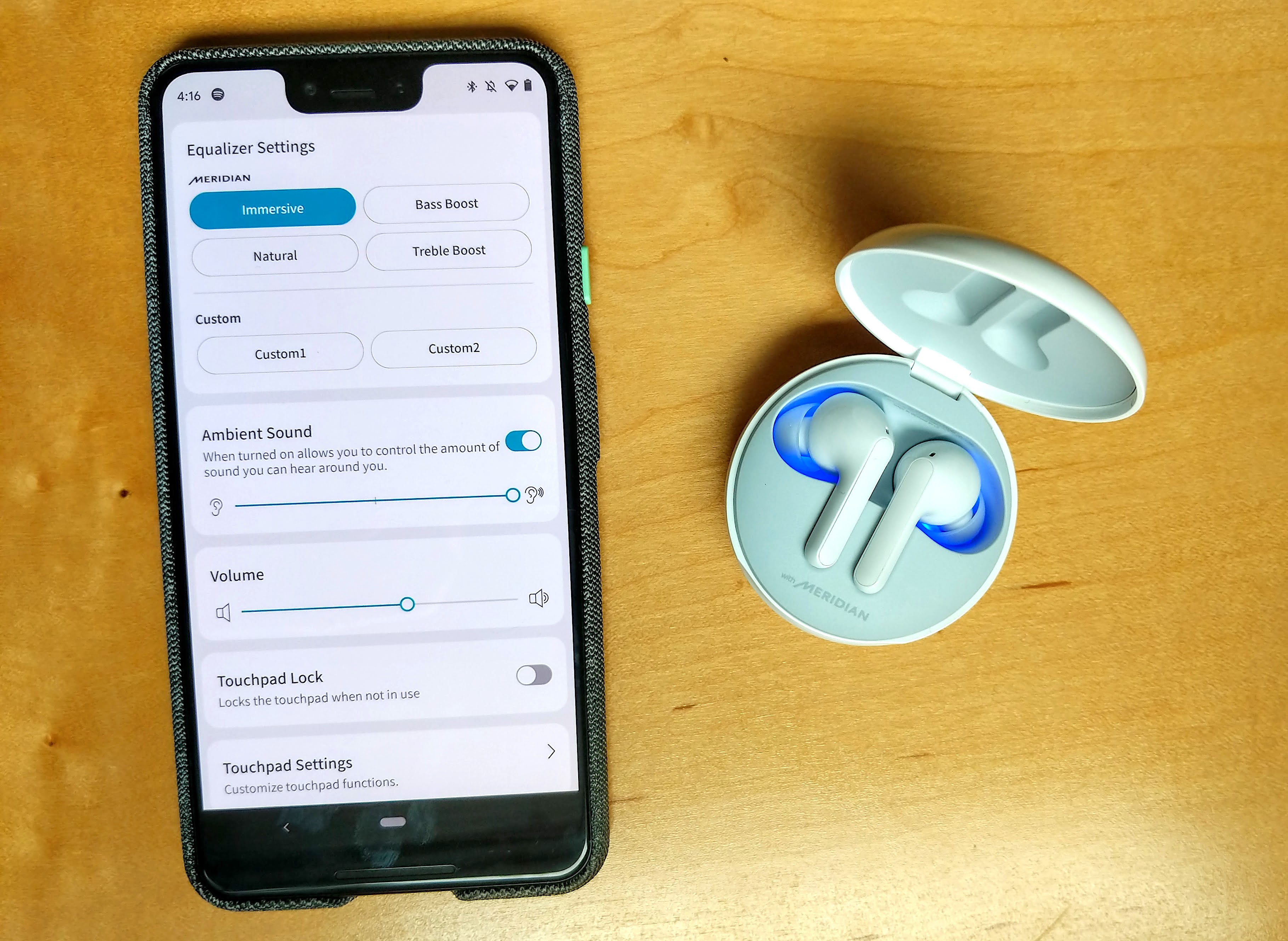
A setting you’re likely to overlook is Intelligent Sorting, which analyzes what features you use most in the app and lists them by priority over time. This should streamline functionality, especially if you’re someone who likes customizing the touchpad controls or rely on the Find My Earbuds option way more than necessary to find your misplaced buds. Other notable features include the ability to lock the touchpad when not in use and a Notifications Settings to personalize the app notifications you want read back to you.
Now, let’s get to what LG believes is the product’s killer feature: UVnano light technology. What is it? In short, it’s UV lighting that’s built into the charging case and supposedly eliminates 99.9% of bacteria on the ear tips and inner mesh. In theory, it sounds game-changing, especially at a time when viruses like COVID-19 spread fast and last on surfaces longer than expected. LG claims the Tone Free has been certified by two laboratories, is UL-verified, and has been supervised by TÜV SÜD. The technology has also gone under independent testing.
It all sounds great on paper, but here’s the problem: there’s no way to see the actual results. You’re basically taking their word for it, and while the certifications do instill some sense of trust, there’s no practical way for the average consumer to determine whether the buds are indeed a germ-free after a 10-minute charge.
LG Tone Free review: Sound quality
The Tone Free uses HSP (Headphone Spatial Processing), a Hi-Res audio technology by Meridian that was developed to recreate a “realistic soundstage.” I wouldn’t go as far as calling the Tone Free’s signature “realistic.” What you end up getting is airy, detailed sound that accentuates the mids and highs, but lacks bass depth.
Immersive is the default signature on these buds and does a reputable job of delivering well-rounded sound; it’s the EQ you’re likely to stick with. Jazz classics like Ahmad Jamal’s “The Awakening” made for an intimate listen with each instrument given prominence and sounding as if they were being played live right behind my ears. The hi-hat consistency on this track alone demonstrates how great the instrumental separation is on these buds.
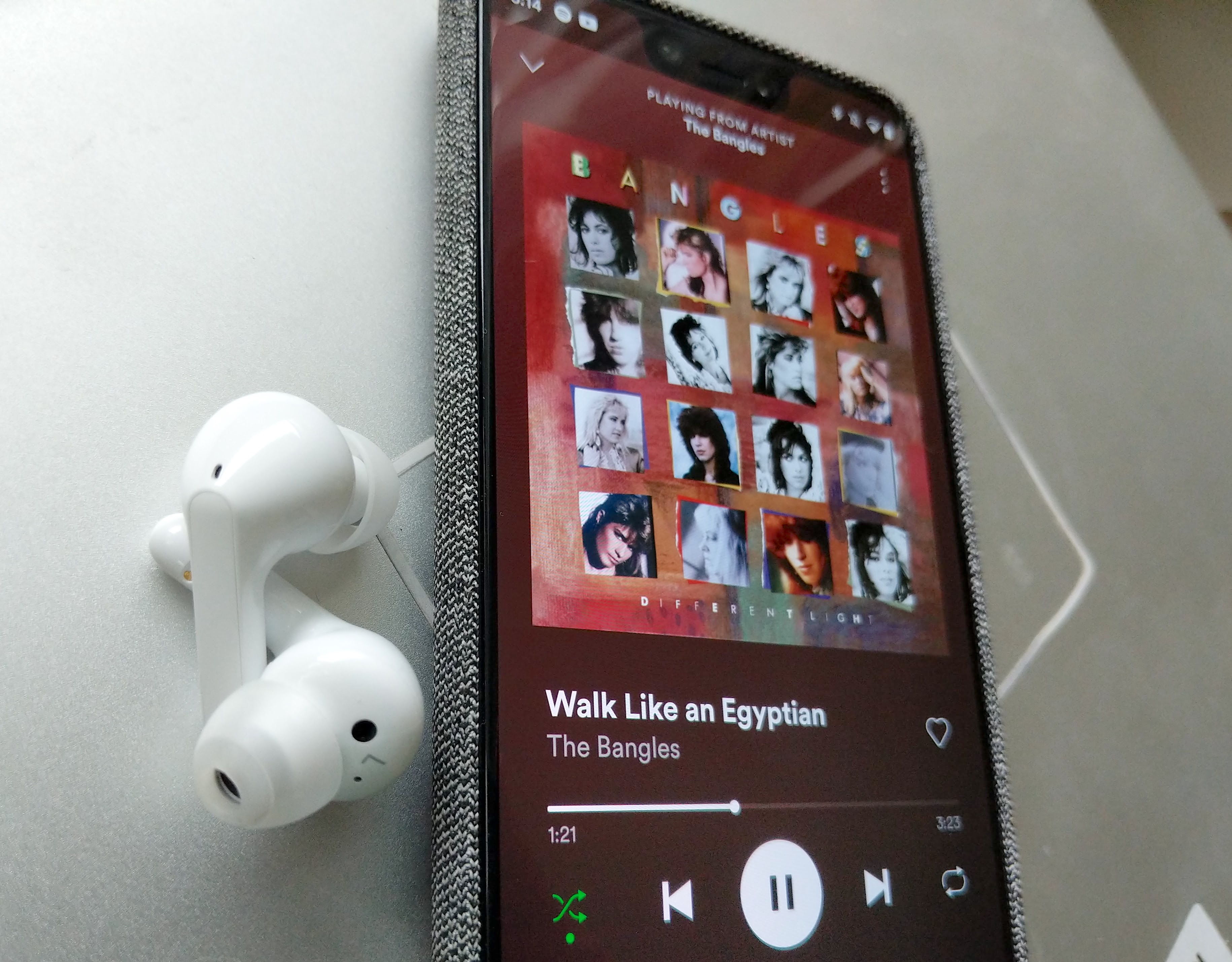
Other genres like pop and rock benefit from the same EQ as well. Bananarama's "Cruel Summer,” a song we can all agree is fitting for the times, carried a vibrant presence that was pleasing to my ears. The layered vocals sounded crisp, while the xylophone riff was reproduced perfectly, striking and transparent throughout the entire song. Even the introductory tambourines on The Bangles' "Walk Like an Egyptian" have an energetic feel to them, but it’s the guitar riffs on the bridge that sound electrifying.
As previously mentioned, bass is not the Tone Free’s forte. You’ll get some decent-sounding lows out of these buds, but don’t expect the hairs on the back your neck to raise when blasting EDM or hip-hop songs. The bass guitar and screeching synths on N.W.A.’s “Alwayz Into Somethin’” had no impact to them. Bass Boost raised the low end up a notch, though it wasn’t convincing enough for a record that demands heavy bass performance. Bass heads are likely to gravitate towards models like the Jabra Elite Active 75t and Beats Powerbeats Pro, which both have boomier soundstages.
LG Tone Free review: Battery life
LG rates battery life at 6 hours, but it’s really 5 to 6 hours, depending on usage. Ambient Sound, high volume, and wireless streaming consume a lot of energy. I tested the buds for about 2 hours daily, which equated to 2.5 days before having to recharge. Does it seem short? Compared to anything other than the AirPods or AirPods Pro, yes, but it’s still more than what Apple gives you. The silver lining is that LG’s fast charging technology is ridiculously fast, generating 1 hour of playtime on a 5-minute charge.
FYI: Monitor the battery levels because the discharge times are off. You’ll notice the right bud loses power more quickly than the left, which is the same issue the Google Pixel Buds 2 has. According to LG, each earbud takes turns connecting to your audio device. When the right bud drops below 50%, the connection switches to the left to maximize battery life. Once the left goes down to 20%, “it switches again to allow both earbuds to run at the same battery levels.” I get the logic, but it just feels inconsistent.
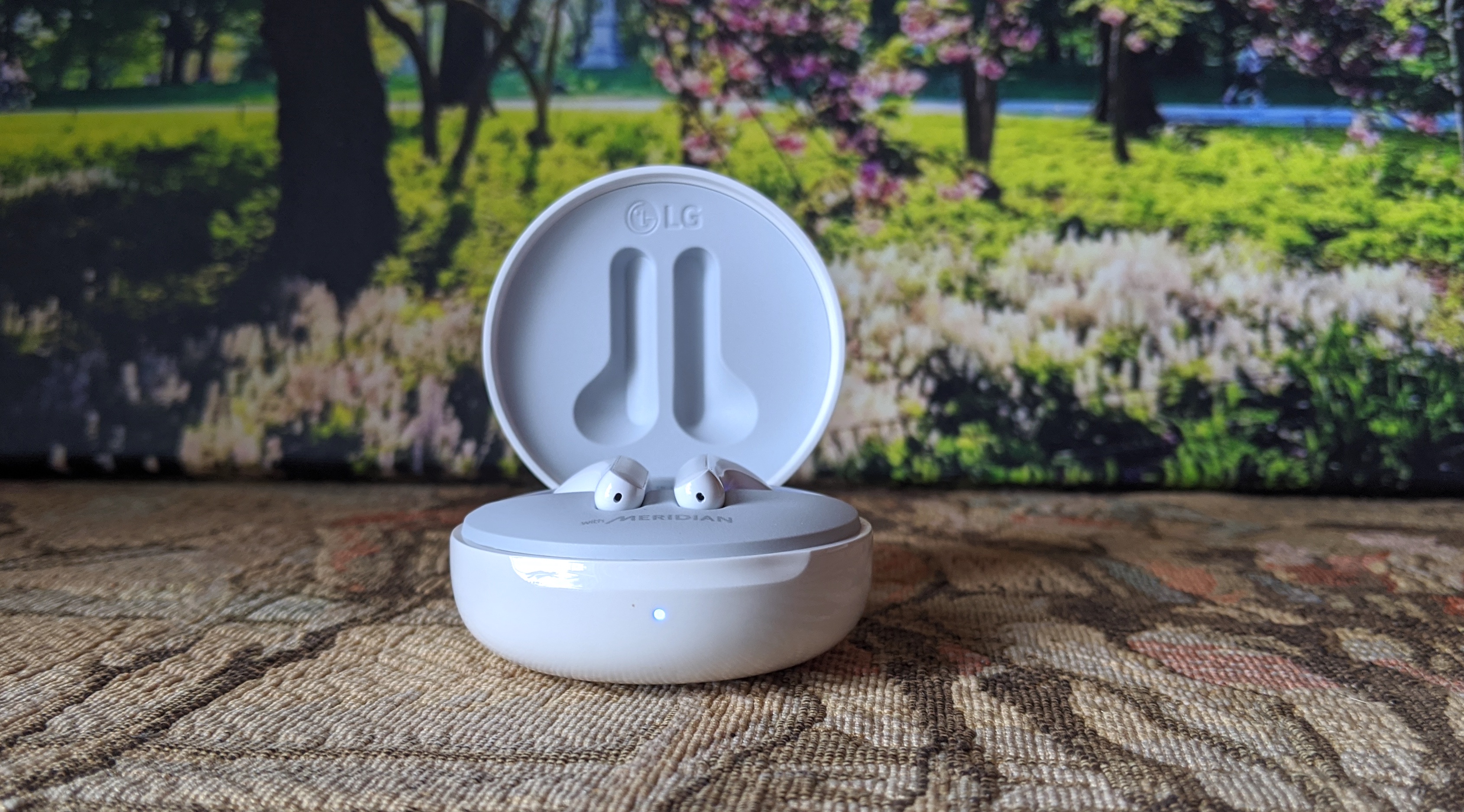
The charging case offers an adequate amount of additional playtime: 18 hours total. You’ll get close to 3.5 extra charges out of it, but that’s still shorter than the AirPods Pro (24 hours) and Elite Active 75t (28 hours). The case does support wireless charging, so at least you can power up the buds cord-free by placing it on any one of your Qi-enabled wireless chargers.
LG Tone Free review: Call quality and connectivity
Call quality on these buds is hit or miss. My fiancée sounded loud and clear, though she noticed some issues on my end. In particular, she mentioned how squeaky and muffled my voice sounded. At first, I thought the environmental rumblings in the supermarket affected performance, but she claims to have heard no background noise whatsoever. By that account, I can say the mics do a fantastic job with noise reduction – it just doesn’t produce the clear call clarity LG advertises.

On the bright side, the Tone Free offer some of the best connectivity in the category. Bluetooth 5.0 is spot-on, instantly pairing with mobile devices, especially Android smartphones; opening the case automatically brings up the Google Assistant setup. The app immediately recognizes the buds as well, which I feel is very rare with similar models. Wireless range is average at about 35 feet; I jumped from room to room during Skype calls without any dropout. The only thing missing is multipoint technology to pair the buds to two or more devices simultaneously.
LG Tone Free review: Verdict
As gimmicky as it seems, the LG Tone Free is more than meets the eye. You’re getting impressive sound and slightly better battery life than the AirPods Pro, along with similar comfort and design (if dangling buds are your bag). Add some solid features to the list of pros, including Ambient Sound, decent music presets, super-quick charging, and customized settings via app.
However, not everything passes the eye test. You have to commend LG for trying something different by integrating UV lighting into the charging case, but there’s no ordinary way to determine whether the feature effectively sanitizes the buds. Something that we do know doesn’t work properly are the touch controls, which are highly sensitive to touch and often misinterpret commands.
For $149.99, you can get some sufficient use out of LG’s buds, especially if you’re trying to save money on AirPods alternatives. Just know that you have other options available at comparable (and lower) price points that have more functionality and battery life, including the Anker Soundcore Liberty Air 2 and Sony WF-SP800N.
A lifestyle journalist with an affinity for consumer products, Alex has over a decade of experience and has worked with popular publications such as Complex, Thrillist, Men’s Health, Gear Patrol, AskMen, and Hoop Magazine. He currently focuses on audio, reviewing the most coveted headphones in the market for both Tom’s Guide and Laptop Magazine.
